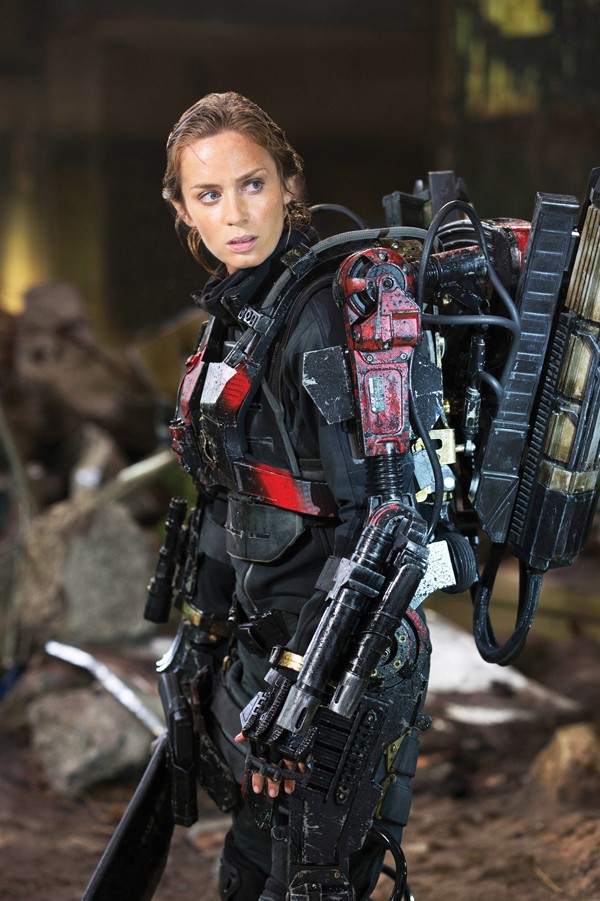Purple Noon (1960; dir. René Clément)—After finishing Patricia Highsmith’s novel The Talented Mr. Ripley last week, I watched Clément’s take on Highsmith’s most famous creation, a handsome young psychopath on a murder-filled European vacation. My most vivid memory of Anthony Minghella’s 1999 adaptation — a brief scene on a boat when Philip Seymour Hoffman started muttering, “Tommy, how’s the peeping? How’s the peeping, Tommy?” at a nosy Matt Damon — is one of my favorite Hoffman moments. (What other actor made inhaling and exhaling so suspenseful?) Apparently the post-WWII Mediterranean was a tourist paradise, and the photography here confirms it; every image is light, bright, and warm, as if to prove Fitzgerald’s point that the very rich are different from you and me. (It also contains a lovely, leisurely stroll through a fish market.) Young and beautiful Alain Delon underplays Tom Ripley throughout in proper Shadow Of A Doubt fashion. And what luck this guy has! Yet in both book and film, Ripley’s close calls and narrow escapes seem unbelievable if not utterly impossible. Then I read an interview with Clément himself, who said “It is impossibility that makes the drama move forward, of course.” But of course. Grade: A-
Meek’s Cutoff (2010; dir. Kelly Reichardt) — I love watching Reichardt’s movies, but I love listening to them, too; her awareness of the mildest sonic fluctuations in weather and animal behavior often supersede the noises her actors make. (Like the saying goes, do not speak unless you can improve the silence.) There’s a quiet pitilessness in her films that’s often expressed through her stoic, frequently stationary camera. She sticks humans in the midst of vast, ageless landscapes to remind them (and us) of their role as tiny ineffectual animals shuffling along on the outskirts of civilization. This existential position is ideally suited to a Western like Meek’s Cutoff. The slow, dangerous progress of a handful of mid-19th century pioneers just off the Oregon Trail proceeds with a cool formality as ritualistic as the folding of a flag. Michelle Williams, as a strong-willed woman in a bonnet and pastel gingham dress, is the star and possibly the voice of reason here. But the shifty trail guide Meek (Bruce Greenwood in heavy mountain-man camouflage) remains unconvinced by her good sense. “We’re all just playing our parts now,” he says. “This was written long before we got here.” Grade: A
Night Moves (2013; dir. Kelly Reichardt) — I don’t want to say too much about this excellent film because there’s still a chance it will open in Memphis this year, but Reichardt’s latest movie, which stars Jesse Eisenberg, Dakota Fanning, and Peter Sarsgaard as a trio of committed environmental activists, is a hushed, open-ended exploration of François Guizot’s claim that “The spirit of revolution, the spirit of insurrection, is a spirit radically opposed to liberty.” But, hey, while you’re waiting for this to arrive, you should check out the 1975 neo-noir with the same title, which was directed by Bonnie And Clyde‘s Arthur Penn. Grade: A-

Emily Blunt in Edge of Tomorrow
Edge of Tomorrow (2014; dir. Doug Liman) — Making video more cinematic seems sort of silly to me. (What is gained when people call video games art?) But movies that start to incorporate elements of video games get my attention. Groundhog Day, Run Lola Run, The Matrix — they all play with flexible realities and multiple “lives,” and they’re all worthwhile. But if that doesn’t interest you, what about this high-concept pitch: Emily Blunt shoots Tom Cruise in the head over and over until he figures out how to save humanity from wicked, nearly indestructible alien invasions. Like Christopher Nolan’s Inception, I respect this movie’s ambitions and tactics a lot even though I don’t love it. I’m a Cruise defender, though, and his performance as Army Private Will Cage (2014’s early favorite for Most Symbolic Character Name) is one of his greatest. As the movie drags on, the physical toll of repeating the same actions over and over (or hearing Bill Paxton’s ravings about the crucible of “glorious combat” one more time) begins seeping into his voice, his face, his sense of self. By dying and restarting for as long as it takes to get the big alien showdown (almost) right, this Dorian Gray movie star finally confronts his own mortality. Plus, it’s laugh-out-loud funny at the most inappropriate times. Favorite line: “Don’t shoot him… again.” Grade: B+
Suspiria (1977; dir. Dario Argento) — I caught a bunch of Mario Bava horror films last autumn, and I really liked last year’s Berberian Sound Studio, which was about an English sound designer sent to work on some Italian horror cheapie about witches at a private school or something. But I waited until I finally bought a Blu-Ray player to fire up this supersaturated chunk of bloody, eerie “Huh?” with the memorable tagline: “The only thing more terrifying than the last 10 minutes of this film are the first 90!” (The numbers change according to edits and international releases.) The somnolent rhythms of the scary bits are part of writer-director Argento’s charm, and they match the dreamy, fairy-tale atmospherics he loves: secret doors, rooms full of barbed wire, hallways covered in pulsating blue or red velvet from the Masque of the Red Death design studio. This is a movie overflowing with weird dialogue that must be shared and put to common use. Top 3, in ascending order: 3) “You can never put too much trust in wolf-hounds”; 2) “Bad luck isn’t brought by broken mirrors but by broken minds”; 1) “You’re going to meet death now!” Grade: B+